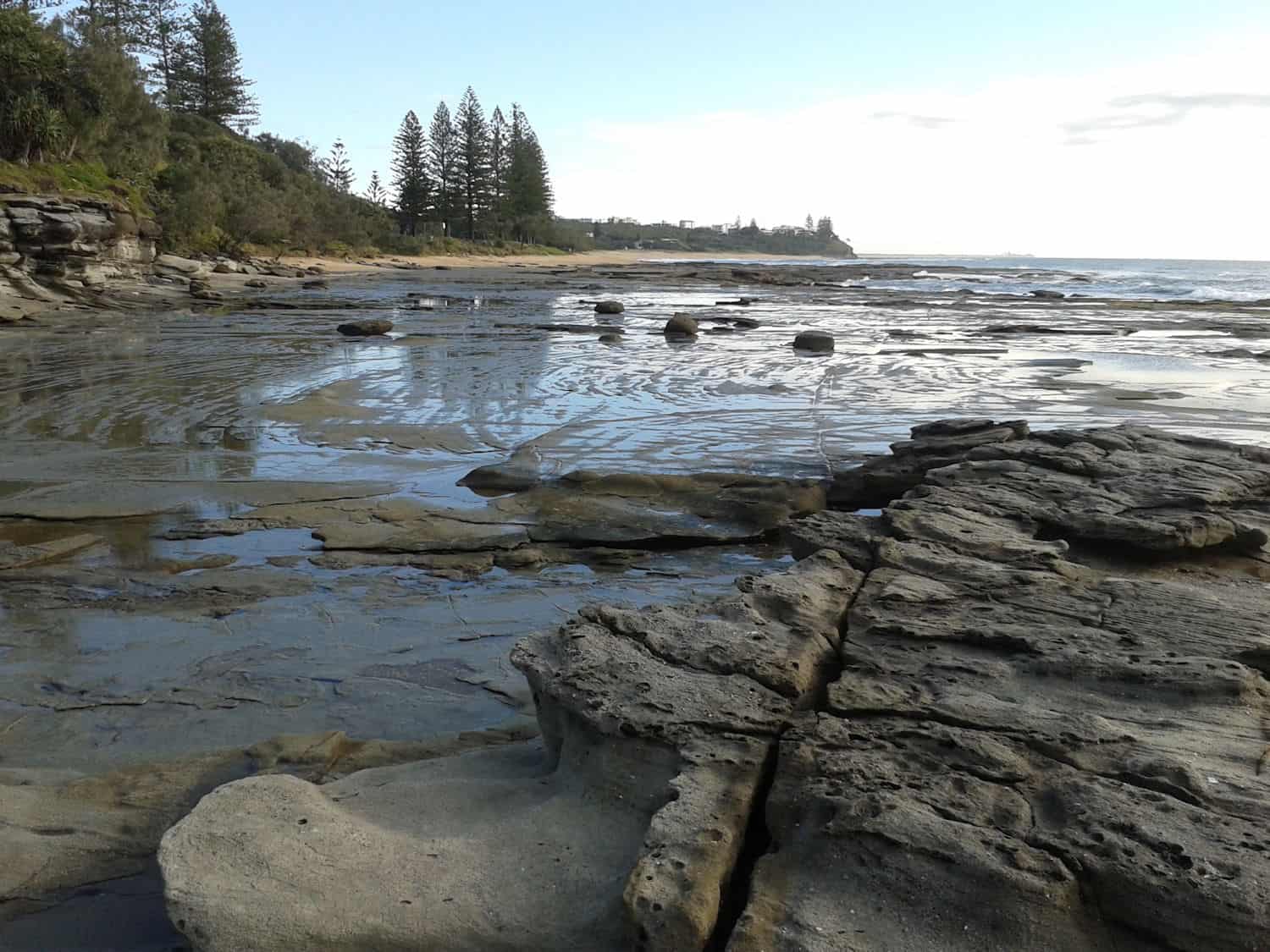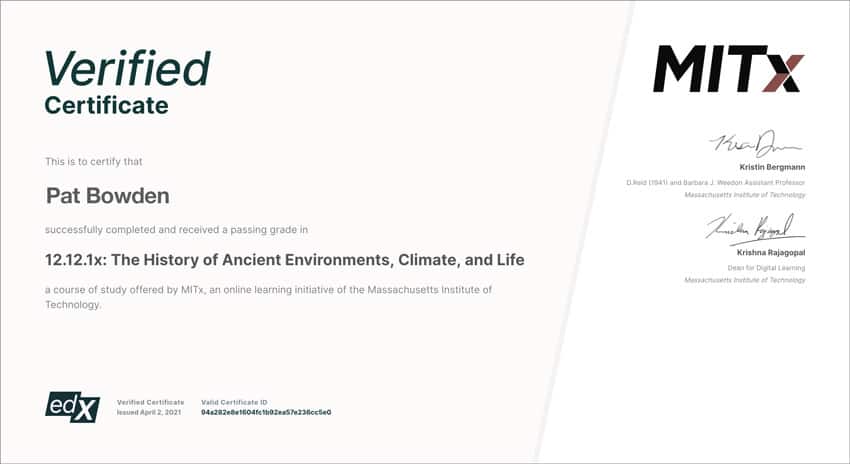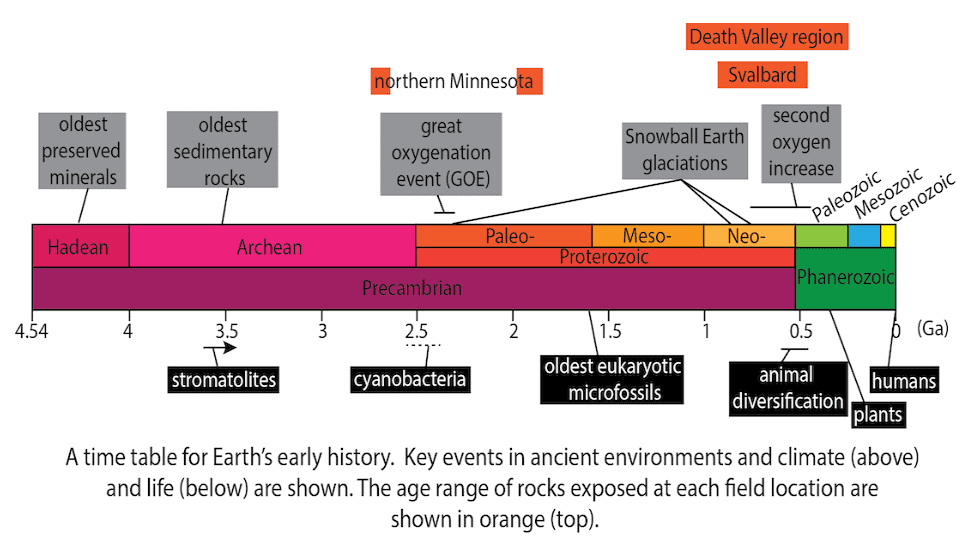Learning Geology with MIT
Dr Kristin Bergmann does a great job of explaining the basics as well as taking a deep dive into the earth’s geological and biological history, by examining rocks, minerals, and fossils.
One of the big attractions of MOOCs is the opportunity to learn from instructors at top universities worldwide for free, or for a small fee, and receive a certificate that includes a university logo. While not the same as being an enrolled student at that university, it can be a thrill to tell your friends that you’ve taken a course from a professor at an Ivy League school or another famous university such as Stanford or Caltech.
For a few years, I have been interested in attempting an online course presented by an instructor from MIT. I set my sights on biology or similar, but whenever I read a course synopsis, I cringed away from the chemistry and mathematics involved. Although I did well in those subjects in high school, more than 40 years ago, they are now very rusty. I love online learning, but with other commitments, I find it hard to devote many hours to one individual course.
I was excited when I found The History of Ancient Environments, Climate, and Life on edX. I find earth’s geological history fascinating, and have taken several short online geology courses. This one looked like an interesting addition, focusing on early life as it appears in rocks from the early-mid Proterozoic, the Neoproterozoic, and the early Phanerozoic eras. And if you are wondering how long ago those eras were, a handy timeline was included in each week’s overview.
Although I found my previous knowledge of the subject useful, this course is suitable for beginners. According to discussion forum comments, some participants have not previously studied earth’s geological history, and found the information fascinating. The first week included a glossary of terms, which I bookmarked. Several useful websites were also mentioned.
Dr Kristin Bergmann does a great job of explaining the basics as well as taking a deep dive into the earth’s geological and biological history, simply by examining rocks, minerals, and fossils. Structure, composition, and shapes were explained well.
Videos had a range of formats. Some were lectures with diagrams and keywords drawn on a clear board. Some were interviews, generally with Harvard professor Andy Knoll. Some were field excursions, usually to northern Minnesota (USA), Svalbard (Norway), and the Death Valley region (eastern California and Nevada, USA). Videos from the field ranged from panoramic views, sometimes with lines drawn on the image to emphasize the direction of the layers, to close-up shots of rock details.
I remembered learning about tectonic disruption (when rocks are sometimes tilted and/or folded after deposition) in high school science lessons. What I didn’t know, though, was that sedimentary rocks are not always formed in horizontal layers. If you have ever seen ripples formed in sand at the seaside, you can imagine some sedimentary layers having these ripple shapes. Depending on the water flow, ripples may or may not be symmetrical.
I was constantly surprised by the amount of information Dr Bergmann could find in the shapes and the layers. And always remembering that the rocks may have been eroded before more sediments were deposited on top.
The course started by exploring and discussing stromatolites and microfossils from the Precambrian period. Later weeks looked at the Great Oxidation Event, different shapes of sedimentary deposition, diversification and extinctions of life forms, and more.
Course Structure
Each week started with an overview which included Highlights, Syllabus, Learning Goals, Learning Skills, and the timeline shown above. Links to additional lecture notes on relevant topics were also provided.
Each week had five lecture videos, ranging in length from a few minutes to over 20 minutes. As with many courses, I watched most videos at 1.5 speed. Up to eight questions were asked after each video. While most were multiple-choice, occasionally the answer needed to be typed in. Each week also included a discussion topic. If you created a post and replied to two other posts, you could mark a box and receive a score of 5/5. You had to upgrade to the Verified Certificate if you wanted these scores to matter, but I was pleased to be able to access the assessment items. Some other edX courses have these locked unless you pay.
I found some flexibility in this session-based, instructor-led course which, in my previous experience, is unusual for a MOOC. When I first joined the course (a few weeks late, because I was busy with other projects and had forgotten the start date), I was surprised not to be offered the certificate track. I then discovered I had missed the submission deadlines for the first few weeks, but within a few days, those deadlines were extended and I was able to submit my answers.
As I worked through the course, I realized that this was one of those well-made courses that I wanted to support. (Not to mention earning a certificate with MIT on it.) I contacted edX support, but was informed that I had missed the instructor-set certificate deadline by less than 24 hours. Disappointed, I continued working on the course without expecting to get a certificate.
When I got to the final week (Week 6), another learner commented on the discussion board that it was disappointing that the Week 6 assessment items were locked for auditing students. A response from the course Mentor explained that edX wanted them to be locked to serve as an incentive for the paid certificate track. I posted in the forum that it was disappointing that I was unable to join the paid track because I had missed the deadline (now a few weeks ago). A few days later, I discovered that the deadline for a verified certificate had been extended. In fact, the final course date was extended two extra weeks. I immediately paid for the Verified Track and finished the Week 6 assessment items. On the downside, the certificate issue date was also pushed back two weeks, so arrived well after I finished the course.
Follow-up Course
In the final week, Dr Bergmann mentioned that a second course is planned. The release date is unknown so far, partly because of travel restrictions to field sites. I’ll look out for it!








